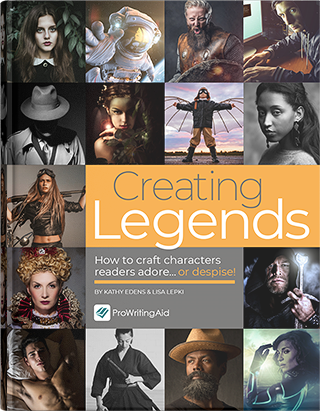
Keep Your Novel From Feeling Flat
Your story idea takes your hero on a journey to fulfil a goal. It may be happy-ever-after with the one, defeating the dark lord, saving the country from a Nazi plot, discovering whodunit, or stopping the school bully. Along the way from beginning to end, your protagonist encounters obstacles and conflict that escalate to a climax.
Although your reader may love your hero’s goal, you can make your story more interesting with other goals and other character’s goals. Add dimension to your story with stories that parallel the main storyline, but have different goals. These stories are subplots to the main plot of the story.
Subplots add depth to your story by giving readers a deeper vision of your protagonist. They can:
- Add dimension to the main plot
- Test the protagonist’s motivation and ability to solve the puzzle
- Create different points of view on the central murder victim and suspects
Subplots build dimension by giving readers a deeper character understanding and providing tension through conflict.
One Story, Several Plots
Subplots can take beginning writers down long trails that lead away from the main story. It’s best to handle them with kid gloves, with a light and gentle touch.
As story structure master, [Robert McKee] said:
If a subplot doesn’t thematically contradict or resonate the Controlling Idea of the main plot, if it doesn’t set up the introduction of the main plot’s Inciting Incident, or complicate the action of the main plot, if it merely runs alongside, it will split the story down the middle and destroy its effect.
Before you plan your subplot consider how it enhances the main story. Each subplot is a mini-story with a beginning, middle, and end. Learning to create and use subplots is part of the craft of writing.
Writers Helping Writers suggests you have a minimum of three plotlines in your story. These plotlines run adjacent to the primary storyline. Before you feel overwhelmed and feel as though you need to write three different novels, think of the ways you can augment the main story through supporting characters and your protagonist.
Plotline Ideas
If you are wondering how to expand on your central story, here are some ideas to get your creative juices going. Your first plotline is the hero’s outer journey—the quest for the main goal. Then starting with your protagonist think about some of these storyline ideas.
The Hero’s Inner Journey
Something in your hero’s background leads them to an ongoing struggle. It could be living up to a parent’s reputation. Or, a privileged life makes them uncomfortable with the poor. Or an addiction. Use this one with caution. It’s a struggle that is overused. It could be something as simple as their physical size. A small man who feels threatened in situations where others wouldn’t even notice.
Use your imagination. If you are planning on writing a series, get a good grasp of your hero’s inner demon so you can use it again in a different way in other stories.
Relationship
The first relationship that springs to mind is a love interest. But you don’t need to limit yourself. Any relationship you protagonist has can serve as a subplot. It may be a friendship, a sibling, parent, mentor, or a rival/opponent.
The relationship fits somewhere between the outer and inner journey, so it gives dimension to your character.
A Supporting Character Story
Your protagonist isn’t the only character in your story. Another supporting character has a storyline that affects your main character. Your reader understands the supporting character better and the hero’s relationship.
Your hero can help or hinder the character’s story. Intertwine the two stories, throughout. This subplot works well not just for a novel, but for an ongoing series.

Society
At first glance, the world around seems like setting and not a storyline source. Depending on your story, societal unrest or discord can play a role in deepening your story, especially when those changes impact your hero. This plotline may not feel as personal as the others, but it has the power to increase the drama in your story.
The Power Influencer
This is a character that has influence over your protagonist. This character has their own goals, frustrations, likes, and dislikes. The reader sees this character through the eyes of your hero. The influencer can be either an ally or an opponent.
This is a relationship subplot on steroids. Your hero and the influencer can be at odds. They may have a similar goal but opposite moral grounds. Or, the influencer may throw up obstacles at every turn as your hero pursues the main goal.
The Bottom Story
While the protagonist’s main goal is the top story, a bottom story runs along below the main story and rarely surfaces until the story’s end. Writer and editor, September Fawkes, calls it the undercurrent.
A good example of a bottom story, is the villain’s story in a mystery. The reader sees clues and bits of the villain’s story, but the entire story doesn’t fit into place until the detective reveals the villain.
PRO TIP: Watch TV series in your genre, to get subplot ideas. A series develops many subplots to maintain the length of the series. See if you can pick out the subplot type.
Stories Within Your Story
Subplots add life to your story. They deepen the reader’s connection with your protagonist by expanding the ways they connect. Subplots offer ways to add conflict and heighten tension, making your story more engaging.
In the real world, we don’t have just one problem to solve. Think about your day. In the same way, multiple plotlines humanize your story. As your protagonist interacts with characters in the subplots, you build an emotional connection with your reader.
Once you start working with subplots, you will enjoy creating the ramifications and conflicts that add depth to the main story.
Multiple plotlines provide you with many ways to reveal your characters. Have fun creating your stories within the story.



